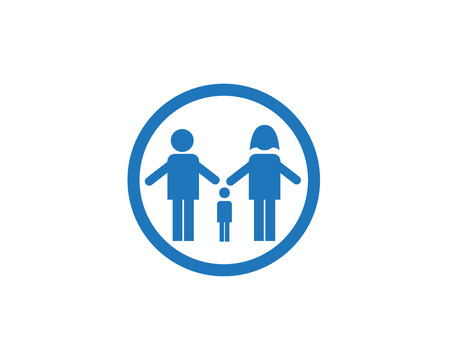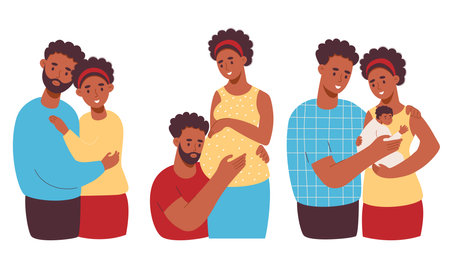Understanding Gua Sha and Cupping: A Brief Overview
Gua Sha and cupping are time-honored healing techniques rooted in traditional East Asian medicine, yet their practical benefits are finding new relevance in American homes focused on holistic wellness. Gua Sha, which translates to “scraping sand,” involves gently scraping the skin with a smooth-edged tool to promote circulation and relieve tension. Cupping, on the other hand, uses special cups placed on the skin to create gentle suction, encouraging blood flow and supporting the bodys natural recovery processes. While these practices may seem exotic at first glance, their core purposes—alleviating muscle tightness, reducing stress, and promoting overall well-being—are universal and easy to appreciate across generations.
For families looking to expand their wellness routines beyond conventional methods, understanding the foundations of Gua Sha and cupping can open new avenues for connection and self-care. Both techniques are approachable when practiced with care: Gua Sha requires only a simple tool (like a jade or stainless steel scraper) and light oil to allow smooth movement along the skin, while cupping sets can be easily found online or at local wellness stores. These ancient methods can be adapted for modern family life, making them accessible options for parents, grandparents, and even teens seeking natural ways to support each others health at home.
2. The Science and Safety Behind the Practices
Gua Sha and cupping are two traditional East Asian therapies that have found a place in modern family wellness routines across generations in the United States. Both modalities work by stimulating the skin and underlying tissues to promote circulation, release muscle tension, and support the body’s natural healing processes. Let’s explore how these practices interact with the body, what scientific research says about their benefits, and important safety considerations for people of all ages.
How Gua Sha and Cupping Work With the Body
Gua Sha involves gently scraping the skin with a smooth-edged tool, usually made of jade or ceramic. This technique increases blood flow to targeted areas, which can help reduce inflammation and improve mobility. Cupping uses suction from glass, silicone, or plastic cups placed on the skin. The negative pressure draws blood to the surface, facilitating detoxification and relieving deep muscle tension. These techniques engage both mechanical stimulation and the body’s innate repair mechanisms.
Evidence-Based Benefits
| Practice | Key Benefits (According to Studies) | Common Uses |
|---|---|---|
| Gua Sha | Pain relief, reduced inflammation, improved microcirculation | Neck/shoulder pain, tension headaches, facial rejuvenation |
| Cupping | Muscle relaxation, enhanced blood flow, decreased chronic pain symptoms | Back pain, sports recovery, respiratory issues |
Recent clinical studies indicate that both practices may help alleviate musculoskeletal pain and contribute to faster recovery following physical activity. Families are increasingly incorporating Gua Sha for its gentle approach to managing everyday aches and using cupping as part of post-exercise routines.
Safety Considerations Across Generations
While Gua Sha and cupping are generally safe when performed correctly, there are important guidelines to follow—especially when including children or older adults in family wellness routines:
- Qualified Practitioners: Always consult certified practitioners or receive proper training before trying these techniques at home.
- Sensitivity: Children and seniors often have more delicate skin; adjust pressure accordingly.
- Avoid Broken Skin: Never perform on open wounds or areas with active infections.
- Monitor Reactions: Look for signs of excessive bruising or discomfort and stop if any adverse effects occur.
- Consult Healthcare Providers: If anyone in your family has underlying health conditions such as bleeding disorders or is taking anticoagulant medications, consult a healthcare provider first.
This thoughtful approach ensures that Gua Sha and cupping remain safe and effective wellness tools that can be enjoyed by every generation in your household.

3. Cultural Connection: Honoring Tradition and Embracing Innovation
Integrating Gua Sha and cupping into family wellness routines is more than just a health choice—it’s a meaningful way to bridge generations and celebrate cultural heritage. For many families, these practices serve as living traditions, handed down from grandparents to parents, and now to children growing up in America. By practicing Gua Sha and cupping together, families can share stories, wisdom, and experiences that connect them to their roots, fostering a sense of belonging and pride in their cultural identity.
At the same time, adapting these ancient techniques to fit modern American lifestyles is essential for keeping them relevant and accessible. Today’s families often blend traditional methods with new approaches—using easy-to-clean silicone cups instead of glass or incorporating guided tutorials found online. These innovations make it possible for busy households to enjoy the benefits of Gua Sha and cupping without losing touch with the core principles behind them.
This blending of old and new not only preserves heritage but also allows each generation to contribute its own perspective. Teens might appreciate the soothing effects of Gua Sha after sports practice, while parents may use cupping as part of their self-care routine after long workdays. Grandparents can share personal stories about how these therapies were used in their childhood homes, creating a rich tapestry of memories and experiences that strengthen family bonds.
By honoring tradition while embracing innovation, American families can keep the spirit of Gua Sha and cupping alive—making these time-tested practices an enduring part of everyday wellness for everyone, from the youngest members to the oldest.
4. Integrating Gua Sha and Cupping Into Family Routines
Bringing Gua Sha and cupping into your family’s wellness routine doesn’t have to be intimidating or time-consuming. These traditional practices can be adapted to fit the modern American lifestyle, promoting relaxation, connection, and holistic health across generations. Here are some practical ways to weave these ancient healing arts into daily and weekly family life.
Evening Wind-Down Rituals
After a busy day, winding down as a family is key to promoting restful sleep and relieving everyday stress. Consider incorporating a short Gua Sha session before bedtime, using gentle strokes on the neck, shoulders, or back. This can become a soothing part of your evening routine—just like reading stories or sharing gratitude moments. Encourage older children and teens to participate by letting them gently massage each others shoulders with a Gua Sha tool under adult supervision.
Weekend Relaxation Sessions
Weekends offer the perfect opportunity for deeper relaxation rituals. Dedicate an hour for a family cupping session in a cozy space, playing calming music and dimming the lights. For those new to cupping, start with gentle silicone cups and keep sessions brief. Invite grandparents to share their experiences or stories about traditional wellness practices, fostering intergenerational connection while caring for everyone’s well-being.
Sample Weekly Integration Table
| Day | Activity | Duration |
|---|---|---|
| Monday | Neck & shoulder Gua Sha (after dinner) | 10 minutes |
| Wednesday | Cupping demo night (learn together) | 15 minutes |
| Friday | Teen self-care: facial Gua Sha practice | 10 minutes |
| Sunday | Family relaxation: group cupping or massage circle | 30 minutes |
Tips for Safe & Enjoyable Practice
- Always use clean tools and consult with a healthcare professional if anyone has health concerns.
- Start with light pressure and simple techniques—no need to rush mastery.
- Create a calming environment with soft lighting, music, or essential oils.
By making Gua Sha and cupping part of shared routines—from quick weekday wind-downs to meaningful weekend sessions—families can foster both physical well-being and emotional bonding across generations.
5. Bridging Generations: Stories and Testimonials
Across the United States, families from diverse backgrounds are rediscovering the benefits of Gua Sha and cupping by weaving them into their wellness routines. These ancient practices are no longer just traditions passed quietly from grandparents to grandchildren—they’re becoming vibrant threads that connect generations, spark conversations, and foster togetherness.
Reconnecting With Roots Through Shared Rituals
The Lee family in Seattle shares how Friday evenings have transformed into a time for multigenerational bonding. Grandma Mei gently demonstrates Gua Sha techniques to her teenage grandkids while sharing stories from her childhood in China. “It’s more than wellness—it’s our heritage coming alive,” says her daughter Linda, who notes that these sessions help bridge cultural gaps and keep family history alive.
Modern Parents Embracing Ancient Wisdom
Many American parents are finding comfort and community in integrating cupping into their family care toolkit. Sarah, a busy mom from Austin, recalls how her young son was initially curious about the “funny-looking cups” his dad used after soccer practice. Now, it’s a regular post-game ritual for them both—one that soothes sore muscles and opens up honest conversations about health, resilience, and self-care.
From Curiosity to Connection
For some families, Gua Sha and cupping started as curiosity-driven experiments but soon evolved into cherished traditions. The Johnsons of New Jersey describe their Sunday mornings where three generations gather in the living room—grandparents leading the way with gentle strokes and warm cups, laughter filling the air. “We didn’t expect these simple tools to become such powerful connectors,” says matriarch Eileen.
Strengthening Family Bonds Across Ages
What unites these testimonials is the sense of closeness that emerges when families embrace holistic wellness together. Sharing Gua Sha and cupping rituals isn’t just about physical health; it’s about building trust, encouraging open dialogue across ages, and creating lasting memories. As these stories show, incorporating traditional healing arts can be a dynamic force for unity—and a reminder that well-being is best nurtured together.
6. Finding Community Resources and Certified Practitioners
When integrating traditional practices like Gua Sha and cupping into your family wellness routines, it’s essential to connect with trustworthy resources and qualified professionals. Ensuring safety and effectiveness across generations begins with education and community support. Here’s how you can navigate the process:
Research Local Wellness Centers
Start by searching for wellness centers or holistic health clinics in your area that offer Gua Sha and cupping. Many cities across the U.S. have integrative health facilities where certified practitioners provide these services. Look for centers with positive reviews, clear practitioner credentials, and a focus on family-friendly care.
Seek Out Certified Practitioners
Certification matters—especially when introducing these techniques to children or seniors. Check if practitioners are licensed acupuncturists (L.Ac.), massage therapists (LMT), or hold specialized certifications in Traditional Chinese Medicine (TCM). The National Certification Commission for Acupuncture and Oriental Medicine (NCCAOM) is a reputable body for verifying credentials in the United States.
Ask About Experience With All Ages
During your search, inquire if practitioners have experience working with various age groups, from young kids to grandparents. This ensures they can tailor sessions appropriately, making the experience safe and comfortable for everyone in your family.
Attend Local Workshops and Classes
Community workshops are an excellent way to learn about Gua Sha and cupping before booking private sessions. These events often cover basic techniques, safety guidelines, and cultural background—all within a supportive group setting. Check community boards, local libraries, or holistic health fairs for upcoming classes.
Join Online Groups and Forums
If you live in an area with fewer in-person options, online communities can bridge the gap. Facebook groups, Reddit forums, and wellness apps frequently host virtual workshops led by certified practitioners. These platforms also allow families to share experiences, ask questions, and find recommendations tailored to their region.
Red Flags to Watch For
Steer clear of practitioners who cannot provide proof of certification, promise instant results, or lack client testimonials. Safety should always come first—especially when integrating new wellness practices into family routines.
By taking these steps, you’ll foster a safe environment where Gua Sha and cupping become meaningful traditions passed down through generations—anchored in community wisdom and expert guidance.


